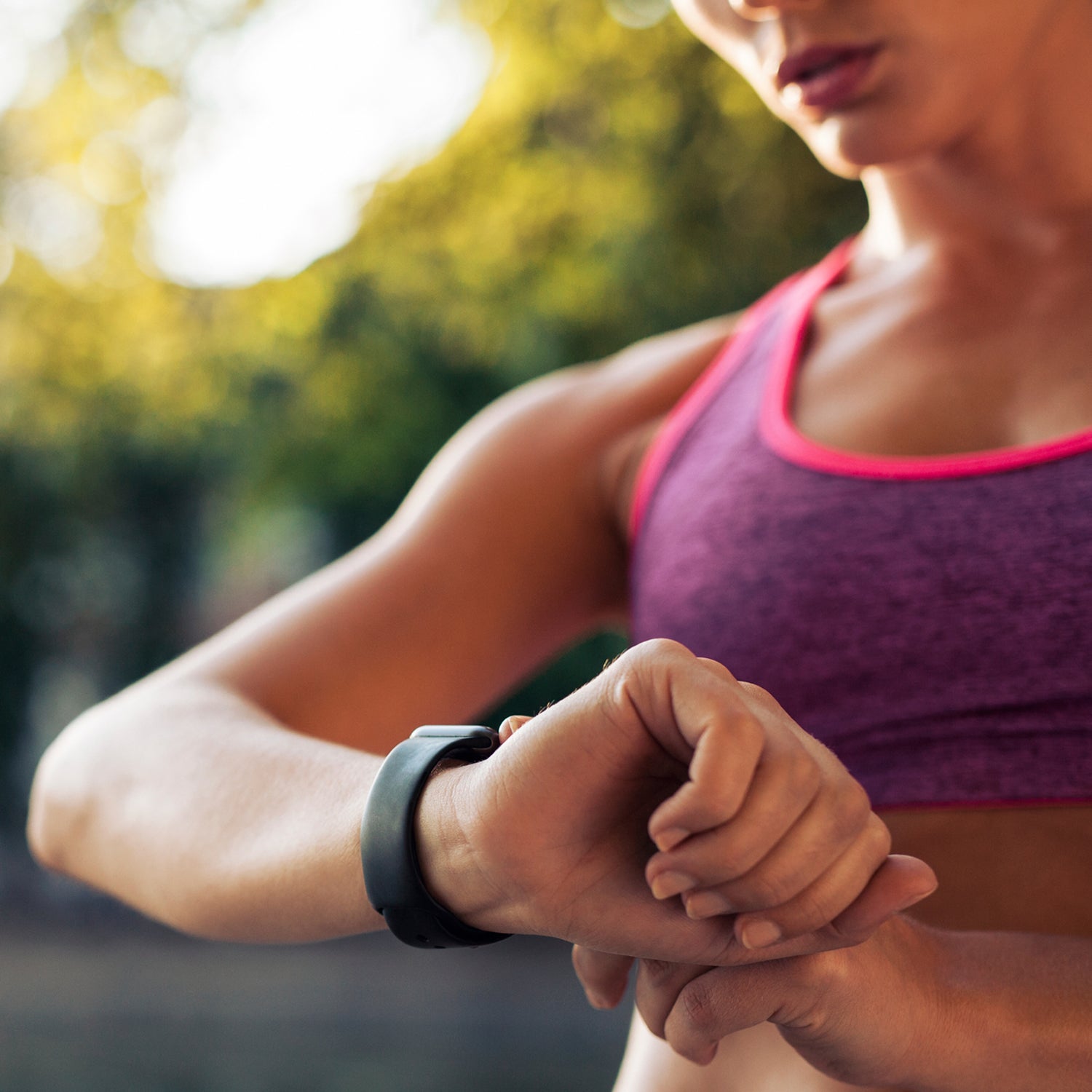Your fitness data is exactly that: data. Which is to say that it can be exposed and vulnerable. Not only could your standard, everyday workout metrics (like how fast, how hard, or how far you ride) surprisingly land in the laptops of crime-sniffing cops, hovering school administrators, and/or determined lawyers—it already has, and to surprising effects. Fitness-data downloads have been used to sleuth crimes, toss mountain bikers from trails, and—on a happier note—save at least one cyclist’s life.
Herewith, an eye-opening selection of extraordinary ways that the wider world interprets our workout stats.
To Keep College Students on Their Feet
As part of its “Whole Person Education,” Christian-based Oral Roberts University now requires all incoming students to wear wrist-mounted Fitbit devices in order to better inventory their physical activity—activity that’s essentially graded. ORU, which has incorporated fitness into its curriculum for the entirety of its 51-year existence, boasts of employing cutting-edge methodologies to log students’ “aerobic points.”
“The marriage of new technology with our physical fitness requirements is something that sets ORU apart,” writes college president William M. Wilson on the .
Does it ever. The alternative press has jumped all over ORU’s tracking policies, wondering if Big Brother-esque tendencies could take over. Might today’s required data—steps (ORU students are encouraged take 10,000 daily) and heart-rate monitoring—give way to Oral Roberts tracking college-kid’s whereabouts, ? Oral Roberts denies that additional data-mining is in the offing.
Meanwhile a exists to ban the devices. “Tracking and grading students’ physical activity encourages an unhealthy environment that may lead to drawing unfair comparisons between students, creating a one-size-fits-all benchmark for health, encouraging compulsions to over-exercise, [and] adding even more stress to a college student’s life,” reads the petition. It currently has over 1,600 supporters.
To Ban Mountain Bikers from Trails
Thanks to the Internet and downloadable data, an “epic ride” can be a double-edged sword. One minute you’re bragging via Strava to your northern California mountain-biking buds. The next you’re banned from the flaxen hills of popular Bryne Preserve—the very place where you once boldly sped along.
Such was the case last February, when City Council members of tony and tiny Los Altos Hills passed an ordinance that banned mountain bikes from the preserve. Evidence on Strava of riding speeds in excess of 20 miles per hour—on very tight and narrow trails that also host hikers and horseback riders—helped decide the mountain bikers’ fate. In fact, some members of the community were in virtual disbelief that riders would eagerly post their law-breaking data for many to see.
“Whoever’s done those apps and whoever puts that together—that just put a hole in their argument,” Los Altos Councilman John Radford . The maverick—and wired—cycling community couldn’t mount a united defense; their offenses were chiseled in data.
To Prevent an Untimely Demise
As 51-year-old Charles Ramsay will vouch, Strava giveth far more than it taketh away.
Back in 2012, the Austin, Texas, mountain-biker studied his own workout metrics and noticed something odd: his rides were generating abnormally high peak heart-rates—as much as 220 beats per minute. Meanwhile, Ramsay felt no different, or faster. A preliminary visit to his cardiologist revealed nothing.
Three months later, a stumped Ramsay, who helps coach a local high school mountain-bike racing team, returned to the doctor. This time he wanted the physician to take a longer look under the hood, and an echocardiogram revealed a 90 percent blockage of Ramsay’s left anterior descending artery.
One triple-bypass surgery and about a year of recovery later, Ramsay is his old healthy self, entering bike races and riding with the high schoolers. “I had no symptoms. I felt fine,” he says. “The reason I went back to the doctor was because my data wasn’t gelling.”
To Make Cities Safer
In 2014, Strava launched a new service called , which assembles and sells massive bundles of anonymous data to urban planning groups and departments of transportation so they can tweak and/or better design infrastructure for pedestrians and riders.
Strava now has enough info—millions of GPS-tracked activities, and hundreds of billions of GPS data points—that huge cities including London, Stockholm, and Seattle have taken advantage of the service. Using Strava Metro, Brisbane, Australia, traffic engineers confirmed that building the city’s Riverwalk bike path (completed in 2014) steered cyclists away from busy streets feeding the city’s downtown area, and instead significantly increased rider numbers in safer traffic corridors.
In order to collect this type of non-motorized data in the past, urban planners and volunteers were regularly assigned the mind-numbing task of staying put on a city block for over an hour and counting all the cyclists and runners that passed by.
“Volunteers sitting on the street corner,” Sheila Lyons of the Oregon Department of Transportation . “Pathetic, really.”
To Affect Your Insurance Premiums
The relationship between personal health and insurance prices is obvious, life-insurance giant John Hancock declared a year ago. In spring 2015, the company introduced a program that incentivizes its premium holders to live healthier lives. Consistently earn the program’s “Vitality Points” and annual premiums go down (as much as 15 percent) while perks (from companies including REI) add up. But what’s murkier is Hancock’s ultimate plans. What else might Hancock and its affiliate companies do with the fitness data captured by the Fitbits given free to policy buyers?
“All of a sudden, everything you do… is sitting in someone’s database,” George Washington University research scientist Anna Slomovic last year.
Hancock says that the captured Fitbit data won’t be sold to third-party organizations. But even if that’s true, its reinvented life insurance program still might backfire on a buyer: fail to maintain fitness minimums, for example, and your premiums could rise.
To Generate Crime
There you and your $6,000 bike are—a post-ride, celeb-quality selfie on Instagram. And with a few quick keystrokes, cunning bike thieves monitoring the app spot you and your pricey machine, and then trace one of your many uploaded ride-routes straight to your home. Congratulations, you’ve left yourself susceptible to a bike heist.
Tales of alleged theft associated with fitness-data are legendary. Some $250,000 worth of bikes swiped in ! Another $70,000 worth of full-suspension mountain bikes disappear from the ! Dozens !
Two things you should know: Bike theft via fitness data has never been utterly proven. And perhaps more importantly, fitness-data users can customize app privacy options—like shielding their home addresses by obscuring their rides’ beginning and end points—in order to reduce the chances that bike theft and fitness data ever become directly linked.
…and to Solve Crime
In March 2015, 44-year-old Jeannine Risley called during the night to report that she’d been assaulted by an unidentified intruder. Police arrived to find overturned furniture, a knife, and a bottle of vodka. They also on a hallway floor. Authorities ultimately mined the fitness tracker for potential evidence.
What they found was more compelling than a Strava King of the Mountain segment: Risley’s Fitbit suspiciously counted approximately 1,000 steps taken after she claimed to have gone to bed on the night of the crime. In early 2016, a Pennsylvania court decided that Risley had essentially fabricated a felony crime. While her attorney entered no plea, the defendant was sentenced to two years of probation and 100 hours of community service.
After the court’s ruling, Lancaster County district attorney’s office spokesman Brett Hambright that the Fitbit evidence “definitely turned the case.”
To Propose
Last spring, Bay Area runners Andrew Chapello and Lisa Mazzocco became engaged when Chapello gave a week’s worth of his April runs increasingly suggestive titles. He called his nearly nine-mile run on Monday, April 11, “hello, what is your name?” followed by Tuesday’s “would you like to go to dinner sometime?” By Friday, the workout title was “?” and when Chapello popped the question on the pair’s Saturday 10-miler, Mazzocco’s public response—via Strava, of course—was “Ever After.”
“You can’t always go out there with the sole objective of beating your PR,” says Strava CEO Mark Gainey.


